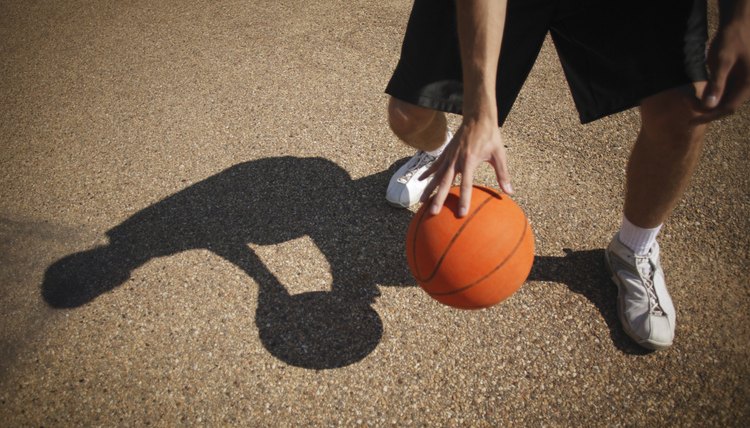Why Do Balls Bounce Differently?

Using a softball to play basketball or a handball during a tennis match doesn't make sense. Different sports require differently designed balls. The size and the material making up a ball matter a great deal, and a lot of scientific research goes into developing the right bounce for the right ball. Several other factors affect the way a ball bounces.
The Physics of a Bouncing Ball
When a tennis ball is thrown to the floor, gravity pulls downward on the ball. While the ball is on the move, kinetic energy--the energy of motion--is at work. As the energy-driven ball hits the floor, the physical forces in play flatten and deform the shape of the ball, dispersing and compressing the molecules that make up the ball. The Law of Conservation of Energy states that energy cannot be lost or gained, so that, instead, energy is transferred. Because a properly inflated or filled ball is essentially round, it quickly tries to recover its round shape, and the energy involved in that causes the ball to bounce back into the air. The Racquet Sports Industry's website states that, like human fingerprints, no two balls seem to be alike, and each has slightly different bouncing ability.
Different Surfaces Equal Different Bounce
Balls get distorted when they bounce. Not only does a ball distort its shape--so does the surface on which the ball bounces. Surfaces that "give," such as Styrofoam and cork, deform as a ball hits against them and save the molecules in the ball from having to do most of the flattening and distorting. Surfaces like Styrofoam, in contrast to metal or ceramic tile, act like a trampoline, states the Terrific Science website, allowing the ball to bounce back higher and faster.
Effect of Temperature
As a ball bounces, it warms. Energy is constantly being converted and transferred during the process of bouncing. An inflated ball, like a basketball or a soccer ball, performs better when the temperature is warmer because the air molecules within the ball expand, overinflating the ball so that it doesn't easily lose its shape on impact. On cooler days, air molecules contract, as do the molecules in the material of the ball itself, causing underinflation and less elasticity. Rubber balls with tightly packed molecules lose little energy to heat or surface distortion and bounce better under a variety of temperatures. The material inside golf balls, baseballs and softballs with solid cores becomes more or less elastic, depending on temperature under this same expansion/contraction principle.
Outer Coverings
During ball-testing experiments, the Racquet Sports Industry website states that the outer coverings of tennis balls, for example, have a lot to do with the bounciness of the ball. As the ball is in play, the fuzz on the outside of the ball wears off, changing the ball's total mass. The court, acting like sandpaper, gradually wears the outer covering of the ball until it changes the weight and shape of the ball. The same hold true for basketballs, baseballs and other balls.
Changing Heights
As you hold a ball in the air, waiting to drop it, the ball contains potential energy. Nothing has happened, because you haven't yet dropped the ball. Still, energy is stored inside the ball. Height has a lot to do with potential energy. The higher the ball is positioned, the more its potential energy. As the ball is dropped and gravity forces it downward, the velocity of the ball increases because of the accelerating effects of gravity. The ball falls through the air, converting stored energy to the energy of motion, and impacts the floor, bouncing higher.
References
- PhysLink: Temperature Effects on Balls
- Science Buddies: Under Pressure--Ball Bouncing Dynamics
- Twin Falls School District: Bounceability
- Sekendiz B, Cuğ M, Korkusuz F. Effects of Swiss-ball core strength training on strength, endurance, flexibility, and balance in sedentary women. J Strength Cond Res. 2010;24(11):3032-40. doi:10.1519/JSC.0b013e3181d82e70
- Yu W, Cha S, Seo S. The effect of ball exercise on the balance ability of young adults. J Phys Ther Sci. 2017;29(12):2087-2089. doi:10.1589/jpts.29.2087
